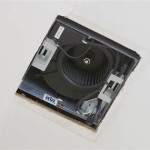```html
Beautiful Bathroom Basins: A Comprehensive Guide
The bathroom basin, often referred to as a sink, is a fundamental element in any bathroom design. More than just a functional fixture for washing hands and brushing teeth, it significantly influences the overall aesthetic and usability of the space. Selecting the right basin involves careful consideration of numerous factors, including style, size, material, and installation method. This article provides a detailed examination of different types of bathroom basins, exploring their features, benefits, and suitability for various bathroom settings.
The choice of a bathroom basin should harmonize with the existing bathroom décor or act as a defining statement piece within a newly designed space. The market offers a wide array of basins, from classic pedestal designs to modern, minimalist models. Understanding the nuances of each type allows for a more informed decision that enhances both the functionality and visual appeal of the bathroom.
Types of Bathroom Basins
The primary classification of bathroom basins is based on their installation method and overall design. Each type offers a distinct aesthetic and caters to specific spatial requirements. Understanding these differences is the first step in selecting the ideal basin for a particular bathroom.
Pedestal Basins: Pedestal basins are a classic and traditional choice, characterized by a basin mounted on a supporting pedestal. The pedestal conceals the plumbing, creating a visually clean and elegant look. They are generally a good option for bathrooms where space is limited, as they offer a smaller footprint compared to some other types. However, they lack built-in storage, which may necessitate additional storage solutions in the bathroom.
Wall-Mounted Basins: Wall-mounted basins, as the name suggests, are directly attached to the wall, leaving the space beneath the basin open. This creates an illusion of spaciousness, making them suitable for smaller bathrooms or powder rooms. The absence of a pedestal or cabinet allows for easy cleaning underneath the basin. The plumbing is typically exposed or concealed within the wall. When selecting a wall-mounted basin, it's essential to ensure the wall is structurally sound enough to support the weight of the basin and any associated plumbing fixtures. Reinforcements might be necessary during installation.
Countertop Basins: Countertop basins, also known as vessel sinks, sit on top of a countertop or vanity unit. They are available in a wide range of shapes, sizes, and materials, offering significant design flexibility. The raised profile of countertop basins can add a dramatic and stylish touch to the bathroom. However, they may require careful consideration of faucet height to ensure comfortable use. The countertop material and finish should also be carefully chosen to complement the basin and withstand water exposure.
Inset Basins: Inset basins, also referred to as drop-in basins, are installed into a cut-out in a countertop or vanity unit. The rim of the basin sits slightly above the countertop surface, creating a seamless and integrated look. This type of basin is practical and easy to clean, as the countertop surface can be wiped directly into the basin. Inset basins are a versatile choice that can suit various bathroom styles, from traditional to contemporary.
Semi-Recessed Basins: Semi-recessed basins are a hybrid option that combines features of both inset and countertop basins. They are partially recessed into a countertop or vanity unit, with a portion of the basin extending beyond the edge. This design can provide a unique aesthetic appeal and can be particularly useful in smaller bathrooms where space is limited. The protruding section of the basin can offer additional washing space and can be a visually interesting element.
Vanity Units with Integrated Basins: Vanity units with integrated basins feature a basin that is seamlessly molded into the vanity countertop. This creates a streamlined and modern look, and the integrated design eliminates any gaps or seams where water and debris can accumulate. These units typically offer ample storage space beneath the basin, making them a practical and functional choice for bathrooms of all sizes. The vanity unit material and finish should be chosen to complement the overall bathroom décor and withstand moisture exposure.
Materials and Finishes
The material of a bathroom basin significantly impacts its durability, aesthetics, and maintenance requirements. Different materials offer varying levels of resistance to scratches, stains, and chemical damage. The choice of material should also consider the overall style of the bathroom and the desired aesthetic effect.
Ceramic: Ceramic is a popular choice for bathroom basins due to its durability, affordability, and ease of cleaning. It is resistant to scratches, stains, and most household chemicals. Ceramic basins are available in a wide range of colors and styles, making them a versatile option for various bathroom designs. However, ceramic can be susceptible to chipping if subjected to impact, and darker colors may show scratches more easily.
Porcelain: Porcelain is a type of ceramic that is fired at a higher temperature, resulting in a denser and more durable material. It is highly resistant to scratches, stains, and fading. Porcelain basins are often preferred for their smooth and non-porous surface, which makes them easy to clean and maintain. Like ceramic, porcelain is available in a variety of colors and styles.
Glass: Glass basins offer a unique and contemporary look. They are available in various colors, shapes, and textures, allowing for significant design flexibility. Glass basins can be made from tempered glass, which is highly resistant to impact and thermal shock. However, glass basins may require more frequent cleaning to maintain their pristine appearance, as they can show water spots and fingerprints more easily than other materials. Certain cleaning products can also damage the glass surface, hence it's necessary to use cleaning products specially designed for glass surfaces.
Stone: Stone basins, such as marble or granite, offer a luxurious and natural look. They are durable and resistant to heat, but they can be porous and may require sealing to prevent staining. Stone basins are available in a variety of colors and patterns, making them a unique and eye-catching addition to any bathroom. The natural variations in the stone can add character and individuality to the basin. Regular sealing and careful cleaning are essential to maintain the beauty and integrity of the stone.
Stainless Steel: Stainless steel basins are durable, hygienic, and resistant to rust and corrosion. They offer a sleek and modern look, making them suitable for contemporary bathrooms. Stainless steel basins are easy to clean and maintain, but they can be susceptible to scratches and water spots. Choosing a brushed or textured finish can help to minimize the appearance of these imperfections.
Composite Materials: Composite materials, such as acrylic or solid surface, offer a combination of durability, versatility, and affordability. They are available in a wide range of colors and styles, and they can be molded into various shapes and sizes. Composite basins are non-porous and easy to clean, making them a practical choice for busy bathrooms. They are also resistant to scratches and stains, but they may not be as heat resistant as some other materials.
Factors to Consider When Choosing a Bathroom Basin
Selecting the right bathroom basin involves careful consideration of several factors, including the size and layout of the bathroom, the desired style, and the budget. A well-chosen basin will not only enhance the aesthetic appeal of the bathroom but also provide years of reliable service.
Size and Space: The size of the bathroom is a primary consideration when choosing a basin. In smaller bathrooms, space-saving options such as wall-mounted basins or corner basins may be the most practical choice. In larger bathrooms, there is more flexibility to choose larger basins or double basins for added functionality. It is important to measure the available space and consider the placement of other bathroom fixtures, such as the toilet and shower, to ensure that the basin fits comfortably and does not obstruct movement.
Style and Design: The style of the bathroom basin should complement the overall design of the bathroom. Traditional bathrooms may benefit from classic pedestal basins or inset basins with ornate details. Contemporary bathrooms may be better suited to sleek wall-mounted basins or countertop basins with minimalist designs. The color and finish of the basin should also be chosen to harmonize with the other bathroom fixtures and finishes.
Budget: Bathroom basins are available at a wide range of price points, depending on the material, size, and design. It is important to set a budget before beginning the selection process and to prioritize features that are most important. While it may be tempting to opt for the cheapest option, it is important to consider the long-term durability and maintenance requirements of the basin. Investing in a higher-quality basin may save money in the long run by reducing the need for repairs or replacements.
Plumbing Considerations: Before purchasing a bathroom basin, it is important to consider the existing plumbing configuration. The location of the water supply lines and drainpipe will influence the type of basin that can be installed. Wall-mounted basins require plumbing to be concealed within the wall, while pedestal basins require plumbing to be routed through the pedestal. It is important to consult with a plumber to ensure that the chosen basin is compatible with the existing plumbing and that any necessary modifications can be made.
Accessibility: For individuals with mobility limitations, it is important to choose a bathroom basin that is accessible and easy to use. Wall-mounted basins with ample knee space underneath can be a good option for wheelchair users. The height of the basin should also be appropriate for the user's reach. Lever-handled faucets are easier to operate than traditional knob-style faucets. Consider the shape and depth of the basin in order to ensure accessibility.
By carefully considering these factors, it is possible to select a bathroom basin that is both beautiful and functional, enhancing the overall appeal and usability of the bathroom. The vast array of styles, materials, and designs available ensures that there is a perfect basin for every bathroom and every budget. ```

Trendy Bowl Bathroom Sink Designs Inspiration And Ideas From Maison Valentina

8 Beautiful Double Bathroom Vanity Ideas Oppein

Beautiful Wash Basin Designs To Transform Your Bathroom

51 Bathroom Sinks That Are Overflowing With Stylistic Charm

15 Modern Bathroom Basin Designs With Pictures In 2024 Natural Stone Design

51 Bathroom Sinks That Are Overflowing With Stylistic Charm

Modern Bathroom Sinks To Accentuate Small Design Unusual Bathrooms Sink

51 Bathroom Sinks That Are Overflowing With Stylistic Charm

Beautiful Bathroom Countertop Designs For A Luxurious Look Homes

Modern Bathroom Vanity Dark Brown Color Unit
Related Posts







